What Does a Behavioral Data Scientist Do?
What Does a Behavioral Data Scientist Do?
A Behavioral Data Scientist analyzes and interprets data on human behavior to gain insights, identify patterns, and make predictions about future behaviors. This specialist operates at the intersection of data science, psychology, and behavioral sciences. The goal is to understand why people do what they do — whether it's consumer behavior, user interaction with technology, or decision-making in complex environments.
Translating Behavior into Data
Behavioral Data Scientists work with various types of data, such as click behavior, purchase history, campaign responses, biometric data, or even textual input from surveys and reviews. They transform unstructured behavioral data into quantitative insights that can be used for strategic decision-making.
Think of predicting customer churn, optimizing user experiences, improving learning processes, or designing personalized interventions in healthcare or marketing.
Techniques and Tools
Behavioral Data Scientists use advanced techniques such as machine learning, A/B testing, behavioral modeling, natural language processing (NLP), and psychometric analysis. They work with tools like Python, R, SQL, and dashboards to visually present data to stakeholders. While traditional data scientists often focus on the 'what' and 'how much', the behavioral data scientist seeks to understand the 'why'.
Real-World Applications
This role is widely applicable across sectors like marketing, e-commerce, education, healthcare, finance, and technology. A behavioral data scientist can contribute to:
- Predicting customer behavior based on emotional and cognitive factors
- Designing effective nudging strategies to influence behavior
- Developing ethically responsible AI that respects human preferences and values
- Analyzing stress or burnout signals in work environments
Human-Centered and Data-Driven
What makes this role unique is the combination of human-centered thinking and data-driven work. A good Behavioral Data Scientist not only has analytical skills but also empathy, curiosity, and a strong ethical foundation. They can translate complex data into understandable narratives that explain and influence behavior.
Related Roles
This role overlaps partially with positions like Data Scientist, User Experience Researcher, Behavioral Analyst, and Marketing Data Specialist. However, while those roles often focus on specific domains or datasets, the Behavioral Data Scientist integrates multiple perspectives to arrive at deeper insights.
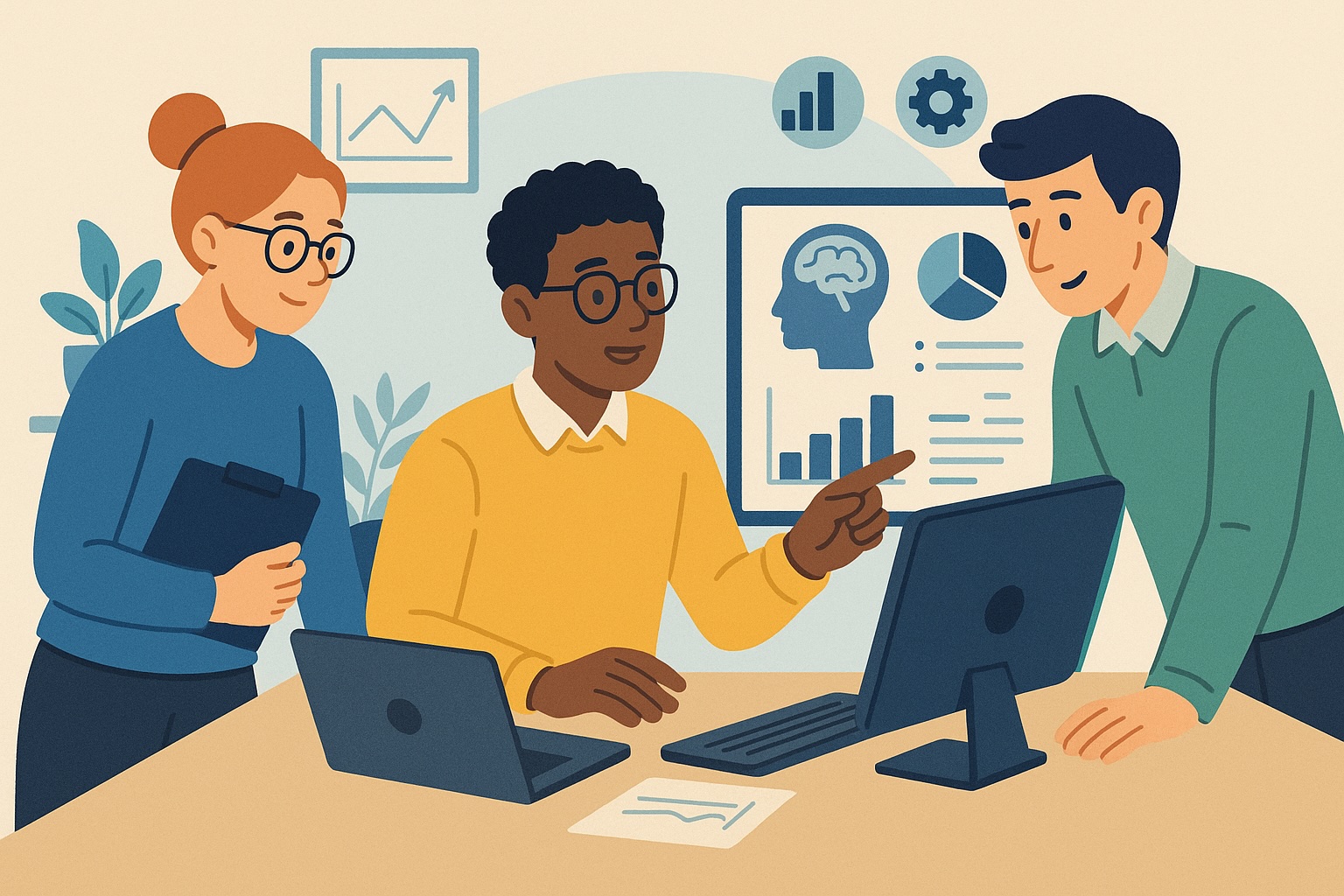
A Day in the Life of a Behavioral Data Scientist
A Day in the Life of a Behavioral Data Scientist
The role of a Behavioral Data Scientist is multifaceted, combining analytical work with human behavior. The workday is filled with insights, meetings, and experiments that contribute to a deeper understanding of the human psyche in a data-driven context.
08:30 – Starting the Day and Initial Data Exploration
The workday often begins calmly with a cup of coffee and the opening of dashboards. The Behavioral Data Scientist reviews recent data streams from ongoing experiments, user interactions, or sensor data. Patterns, anomalies, or unexpected trends are noted for further analysis. Are there sudden drops in user activity or unusual click patterns? Everything might hold value.
09:30 – Daily Stand-up with the Project Team
In a short daily meeting with UX designers, psychologists, and other data experts, ongoing studies are discussed. Is a new A/B test launching soon? Does a behavioral model need adjustment? This alignment ensures everyone is working in the same direction.
10:00 – Setting Up a New Experiment
Today, the focus is on preparing a behavioral study. Together with the team, the Behavioral Data Scientist develops a hypothesis about user preferences. An online experiment is then designed to compare user behavior in different scenarios. Ethics, bias, and representativeness are carefully considered throughout.
12:30 – Lunch and Informal Knowledge Sharing
Time to step away from the screens. During lunch, colleagues join for relaxed conversations or spontaneous brainstorming about behavioral psychology and AI. Sometimes, papers are shared or insights from conferences are discussed.
13:30 – In-Depth Data Analysis
The afternoon is reserved for focused work. Using tools like Python, R, or SPSS, the Behavioral Data Scientist dives into complex datasets. Correlations between behavior and context are examined, models are optimized, and predictive algorithms are tested. Time is also spent on visualizing results in a clear and accessible way.
15:30 – Discussing Results with Stakeholders
In a presentation with internal stakeholders—such as marketing, product development, or HR—the Behavioral Data Scientist shares initial findings. How does behavior affect conversion rates? Which psychological triggers prove most effective? The insights are directly linked to strategic decisions.
16:30 – Documentation and Reflection
At the end of the day, time is taken to update documentation. What are the preliminary conclusions? Are there any limitations to the study? A brief reflection is also made on what went well and what could be improved tomorrow.
17:15 – Wrapping Up the Day
The day ends with saving the latest analyses and a quick look at tomorrow’s schedule. Perhaps a user interview is planned or the evaluation of a behavioral intervention.
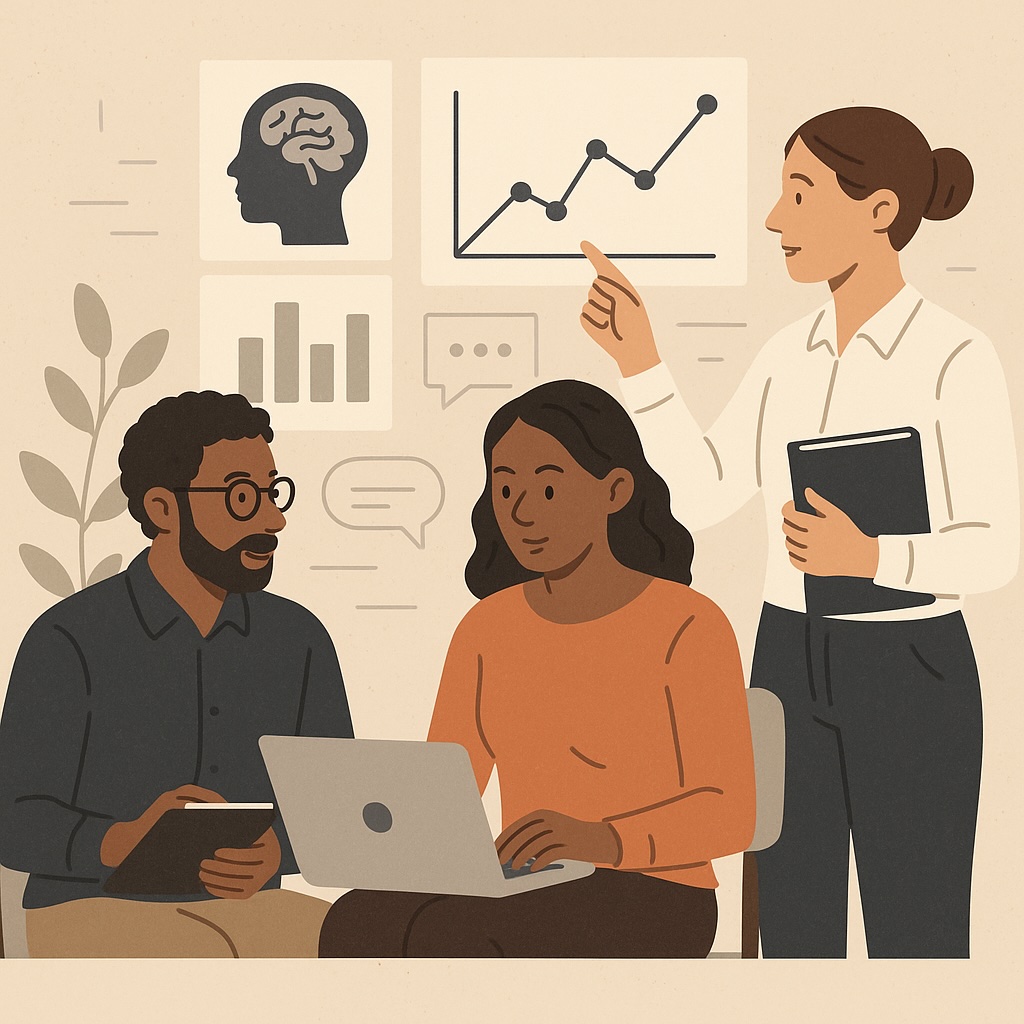
What tools does a Behavioral Data Scientist use?
Behavioral scientists working with data use a wide range of tools and technologies to gain detailed insights from large volumes of data. These tools are essential for understanding, predicting, and influencing human behavior. Depending on the research goal, the toolkit ranges from advanced statistical software to platforms for behavioral analysis, visualization, and experimentation. In this article, we discuss the key tools used by Behavioral Data Scientists.
Statistical Software
Statistical software forms the foundation of behavioral data analysis. The two most commonly used programming languages are R and Python.
R offers extensive capabilities for statistical testing, regression analysis, and visualizations. Thanks to numerous open-source packages such as `ggplot2`, `lme4`, and `psych`, it is particularly powerful for behavioral science research.
Python is widely applicable and combines data analysis with machine learning, automation, and visualization. Libraries like Pandas, Scikit-learn, Seaborn, and TensorFlow are essential for developing predictive models based on behavioral data.
Data Visualization Tools
Clear visualization helps communicate complex behavioral insights to stakeholders. Behavioral Data Scientists therefore use tools such as:
- Tableau – for interactive dashboards and dynamic charts.
- Power BI – especially popular within organizations using the Microsoft ecosystem.
- Looker Studio – useful for reporting based on Google Analytics and other web data.
- D3.js – a JavaScript library for building custom, interactive data visualizations.
Behavioral Analysis Software
To analyze behavioral data such as clicks, session duration, or navigation paths, Behavioral Data Scientists use specialized software:
- SPSS – for regression, factor analysis, and correlation analyses.
- MAXQDA or NVivo – for qualitative analysis of text data and interview results.
- Scikit-learn and TensorFlow – for machine learning models on behavioral data.
- RapidMiner – a user-friendly tool for predictive analytics with minimal coding required.
Experimentation and Testing
Hypothesis formulation and validation are central steps in behavioral research. A/B tests and multivariate testing are commonly used. Well-known platforms include:
- Optimizely – a user-friendly platform for setting up experiments.
- VWO (Visual Website Optimizer) – focused on conversion optimization and behavioral analysis.
- Unbounce – ideal for testing landing pages and CTAs.
- Google Optimize – a free (basic-level) tool for A/B testing on websites.
UX Analysis and Heatmaps
In addition to statistics and experiments, Behavioral Data Scientists also use visual behavioral analysis. Tools such as:
- Hotjar – with heatmaps, session recordings, and user feedback forms.
- Crazy Egg – offers click maps, scroll maps, and user segmentation.
These tools help identify bottlenecks in user flows, conversion barriers, and user intentions.
Eye-Tracking Software
For deep insights into visual attention, eye-tracking is used, often in combination with UX research:
- Tobii – one of the market leaders in hardware and software for eye-tracking.
- iMotions – integrates eye-tracking with biometric data such as heart rate and facial expressions.
These tools are particularly valuable in usability research, behavioral validation of advertisements, and optimizing product designs.
Summary
The toolkit of a Behavioral Data Scientist is rich and versatile. From statistical analysis in Python or R to visual dashboards in Tableau and behavioral insights through Hotjar and eye-tracking: each tool plays a crucial role in understanding human behavior. By strategically combining these technologies, powerful insights emerge that help organizations make better decisions, improve user experiences, and effectively influence human behavior.
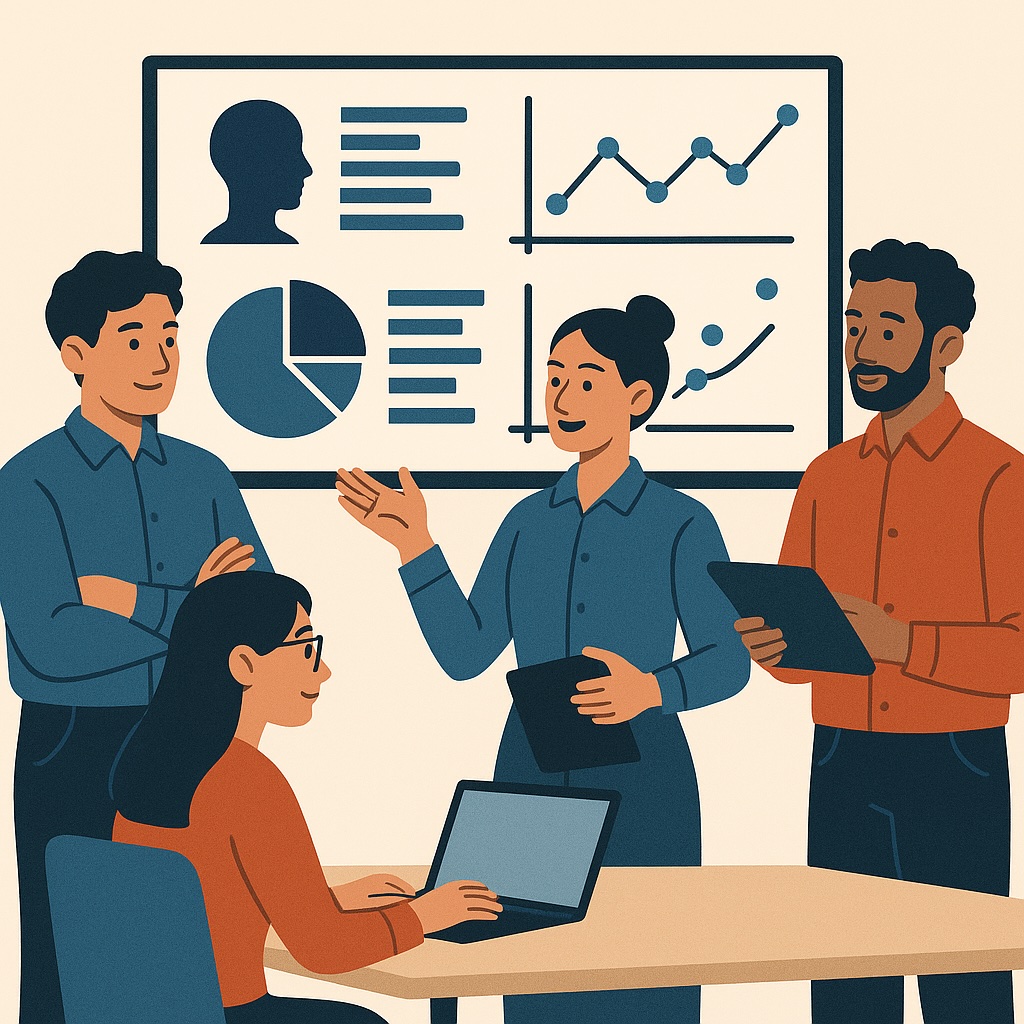
What is the salary of a Behavioral Data Scientist?
The salary of a Behavioral Data Scientist can vary greatly depending on factors such as experience, location, the type of organization (e.g., government, university, tech company, or consultancy), and the use of specific analytical techniques or programming languages. These professionals combine insights from psychology, behavioral sciences, and data analysis to explain and predict human behavior. Below is an overview of salary expectations based on different experience levels.
Entry Level (Junior Behavioral Data Scientist)
A Junior Behavioral Data Scientist, just starting out and with a master's degree in psychology, behavioral sciences, or data science, typically earns between €2,900 and €3,700 per month. At this level, they often work under supervision on data collection, statistical analyses, and setting up experiments or A/B tests. Common tools include Python, R, SPSS, and platforms like Qualtrics or Pavlovia.
Mid-level (Behavioral Data Scientist)
A Behavioral Data Scientist with 3 to 6 years of experience earns on average between €3,700 and €4,800 per month. Professionals at this level work independently on research questions, build predictive models, analyze user behavior or customer data, and translate findings into actionable recommendations for UX, marketing, or policy development. Skills in machine learning, data storytelling, and behavioral modeling are crucial at this stage.
Senior Level (Senior Behavioral Data Scientist)
A Senior Behavioral Data Scientist with more than 6 years of experience typically earns between €4,800 and €6,200 per month. They often lead complex projects, manage teams, and advise stakeholders at a strategic level. They combine deep knowledge of human behavior with advanced data analysis and contribute to product development, behavioral interventions, or high-level policy advice.
Specialist / Lead Behavioral Scientist
In specialist or leadership roles — such as Lead Behavioral Data Scientist or Behavioral Insights Advisor — the salary is often between €6,200 and €7,500 per month or more, depending on the organization. These positions are mainly found in large consultancy firms, government agencies, international NGOs, or tech companies. These experts combine academic knowledge, data expertise, and behavioral psychology to support impactful decision-making.
Location and Sector
The sector and region in which you work influence the salary. In the Randstad area, at international companies, or at specialized consultancy firms, salaries are often higher than in the public domain or academic world. The demand for behavioral data expertise is especially growing in sectors such as e-commerce, finance, healthcare, and public policy.
Education and Skills
Behavioral Data Scientists typically have an academic background in behavioral sciences, psychology, cognitive neuroscience, or a related field, often combined with skills in data science, statistics, and programming (Python, R). Knowledge of experimental design, causal inference, and data ethics is also important. Soft skills such as critical thinking, communication, and persuasiveness are essential to effectively convey insights to stakeholders.
| Job Level | Experience | Monthly Salary (gross) |
|---|---|---|
| Junior Behavioral Data Scientist | 0–2 years | €2,900 – €3,700 |
| Behavioral Data Scientist (mid-level) | 3–6 years | €3,700 – €4,800 |
| Senior Behavioral Data Scientist | 6+ years | €4,800 – €6,200 |
| Lead / Specialist Behavioral Scientist | Specialist / Strategic | €6,200 – €7,500+ |
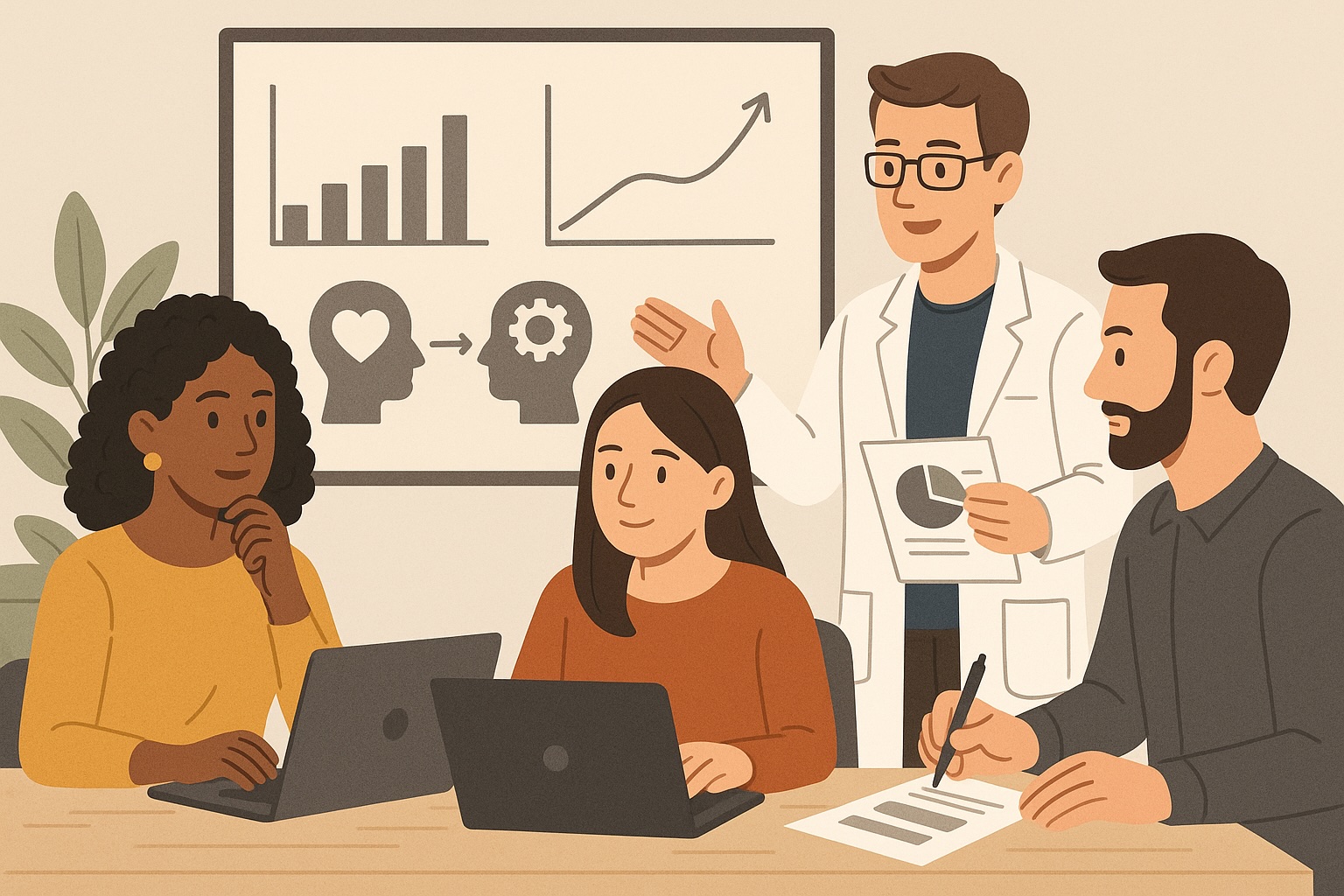
Career path and growth opportunities
Career Path and Growth Opportunities as a Behavioral Data Scientist
The career path of a Behavioral Data Scientist offers ample opportunities for growth, specialization, and leadership. The role sits at the intersection of data analysis, behavioral science, and strategic decision-making, providing both horizontal and vertical career advancement options.
Starting Point: Junior Behavioral Data Scientist
Most professionals begin in a junior role, where they gain experience in collecting, analyzing, and interpreting behavioral data. Often, they work under the guidance of senior colleagues on projects such as A/B testing, customer segmentation, or behavioral modeling. Here, they develop their technical skills, learn to work with tools like Python, R, SQL, and experimentation platforms, and gain domain knowledge in sectors such as e-commerce, healthcare, or finance.
Progression to Medior and Senior Roles
After a few years of experience, a Behavioral Data Scientist typically advances to a medior or senior position. At this stage, the focus shifts more toward strategic thinking, independently leading research, and advising stakeholders based on behavioral insights. They contribute to the development of predictive models, optimize customer journeys, and translate complex behavioral data into actionable recommendations for product development, marketing, or UX.
Specializations and Deepening Expertise
A key aspect of this career is the opportunity for specialization. Behavioral Data Scientists can deepen their expertise in areas such as:
- Consumer Behavior Analysis: focused on predicting purchasing decisions and brand preferences.
- UX Research & Experimentation: where user experience, design choices, and conversion optimization are central.
- Neuromarketing & Cognitive Modeling: leveraging psychological and neurological principles.
Leadership and Management Roles
For those who enjoy taking on more responsibility, there are growth opportunities into roles such as Team Lead Behavioral Analytics, Head of Data Science, or even Chief Data Officer. In these positions, the focus is on strategy, vision, and team development, acting as a bridge between data science, marketing, UX, and executive management.
Transition to Consulting or Entrepreneurship
Some professionals choose to apply their expertise as consultants or freelancers. They support organizations in implementing data-driven behavioral strategies or lead transformation projects focused on customer-centric work. This path offers greater autonomy and the opportunity to work across diverse industries.
Continuous Learning and Development
The world of behavioral data is constantly evolving. Ongoing education through masterclasses, certifications in experimental design or AI, and participation in industry conferences is essential to stay current. Strengthening soft skills such as storytelling, stakeholder management, and ethical data use also plays a crucial role in further career development.
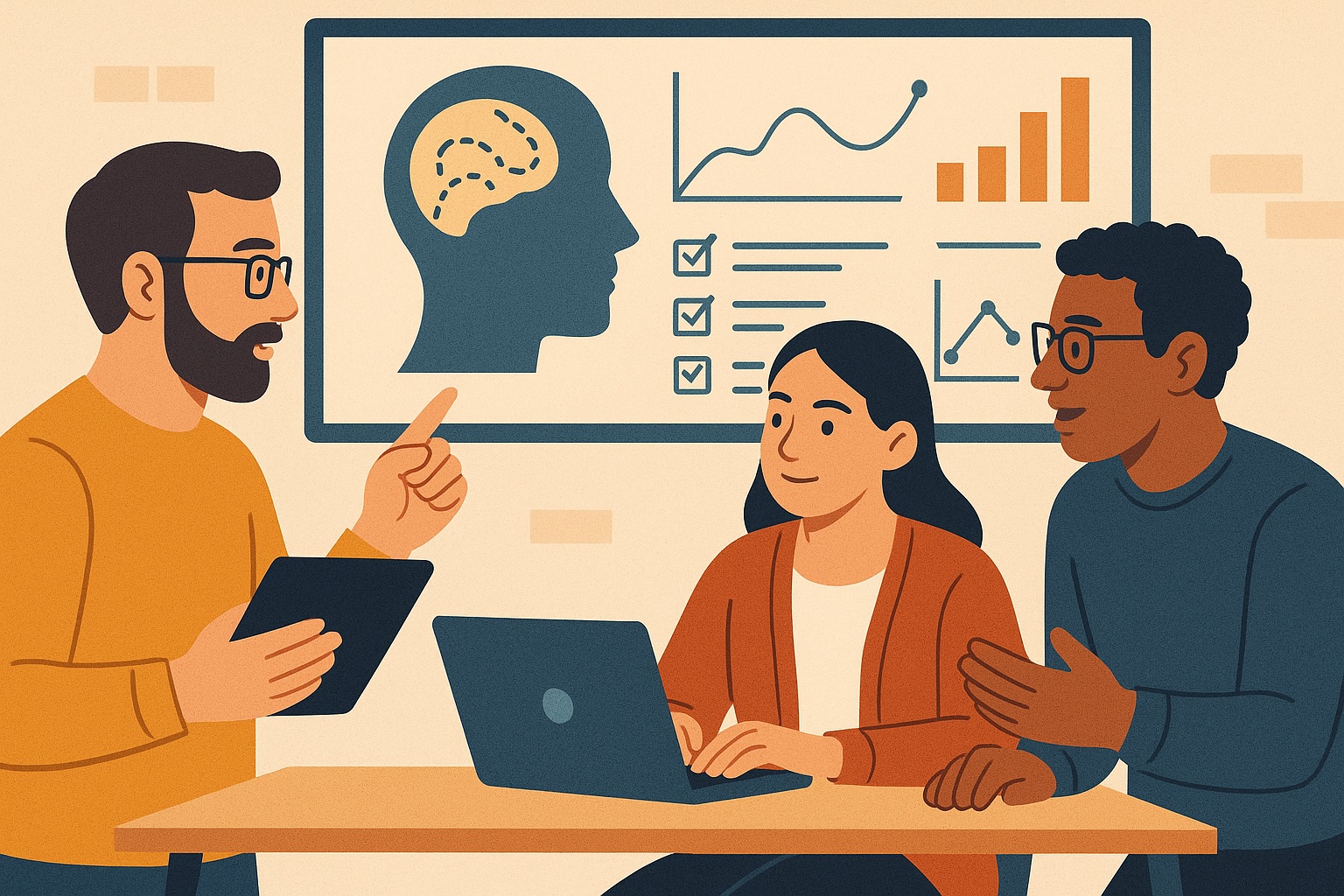
Education and Certification
Education and Certification
Most professionals in this field have an academic background in disciplines such as psychology, neuroscience, economics, behavioral sciences, or cognitive sciences. This knowledge forms the foundation for understanding human behavior, which is essential for the work of a Behavioral Data Scientist.
From Theory to Practice
Although a master’s degree or PhD is still considered valuable, the job market is increasingly emphasizing demonstrable practical experience. Employers place great value on the ability to analyze complex datasets, apply statistical models, and translate behavioral insights into concrete recommendations. Internships, research projects, and hands-on data work are therefore important additions to formal education.
Certifications and Skills
Certifications in tools such as R and Python remain valuable. There is also a growing demand for knowledge of AI and machine learning algorithms, including decision trees, random forests, neural networks, and natural language processing (NLP).
Experience with cloud platforms such as AWS, Google Cloud, or Azure is becoming increasingly important, especially when analyses need to be performed at scale. Tools like SQL, Tableau, Power BI, and Jupyter Notebooks are often standard parts of the technical toolkit.
Core Competencies for Success
In today’s job market, there are several skills that set Behavioral Data Scientists apart:
- Effectively processing and interpreting large and complex datasets
- Combining statistics with psychological insight for behavioral analysis
- Building predictive models and algorithms focused on human behavior
- Translating analyses into strategic advice and tangible business impact
- Collaborating with multidisciplinary teams, including UX designers, marketers, and data engineers
Lifelong Learning
The world of data and behavior is changing rapidly. Continuous professional development through online courses, conferences, workshops, and certification programs is essential to stay relevant and future-proof. Many professionals choose to specialize in a niche, such as behavioral prediction in e-commerce, healthcare, or public policy development.
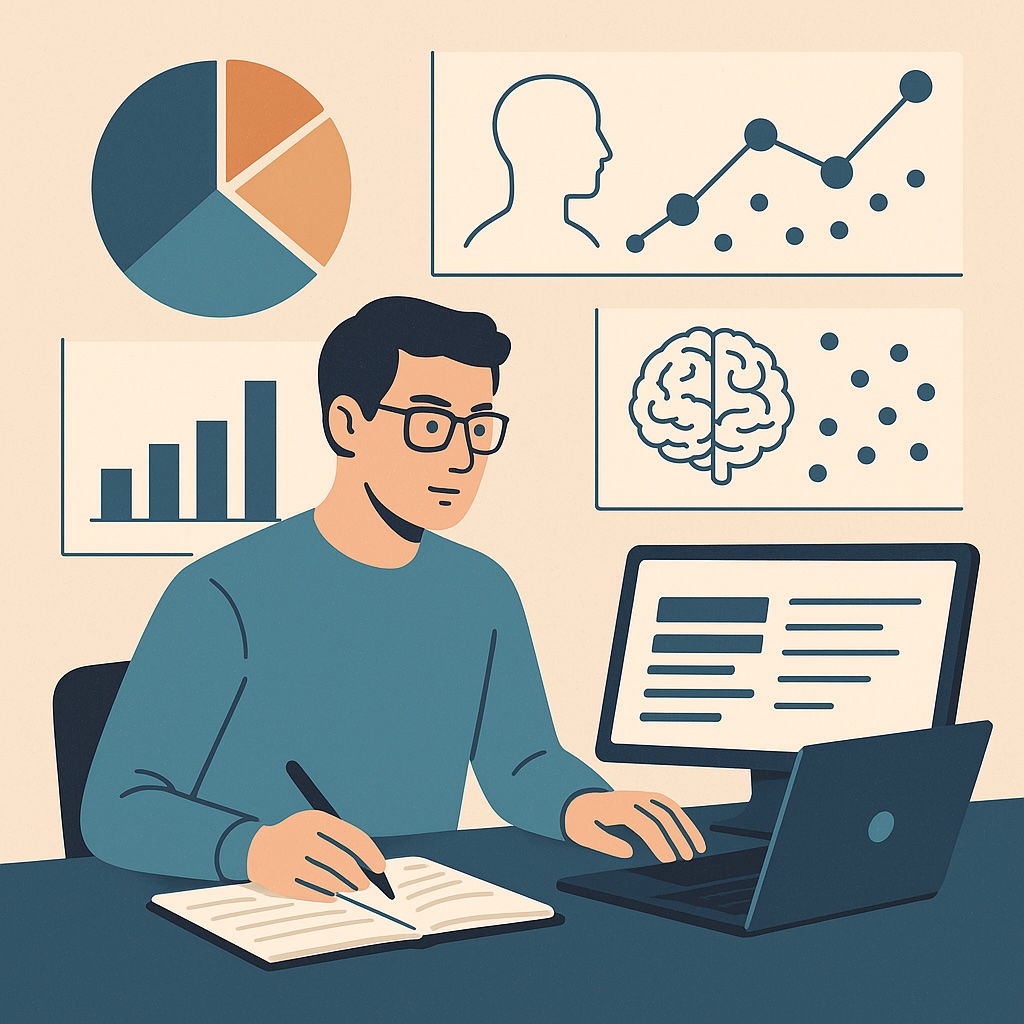
Networking and Industry Organizations
Networking as a Key to Growth in Behavioral Data Analysis
In the rapidly evolving world of behavioral data analysis and decision-making, building and maintaining a professional network is essential. By actively participating in professional communities, professionals not only stay up to date with the latest developments but also increase their visibility and opportunities for exciting collaborations or new career moves.
Membership in Relevant Industry Organizations
Joining leading organizations such as the Association for Behavioral and Cognitive Therapies (ABCT) or the Society for Judgment and Decision Making (SJDM) opens the door to a wealth of knowledge and connections. These industry groups provide access to professional literature, themed networking events, and specialized working groups focused on current topics related to behavior, data, and decision-making.
Access to Conferences and Workshops
Through these networks, members regularly receive invitations to (international) conferences, workshops, and seminars. These events present the latest research findings, algorithms, and real-world case studies—often directly applicable for Behavioral Data Scientists. Attending such gatherings is not only inspiring but also enhances professional development and positioning within the field.
Continuous Learning and Personal Development
Industry organizations are also a valuable source for ongoing education. Think of online training courses, certification programs, and access to professional publications. For those who want to keep developing within the domain of behavioral science and data-driven decision-making, these networks provide an indispensable foundation.
Connecting with Like-Minded Professionals
Beyond knowledge sharing, these networks especially offer the opportunity to connect with like-minded individuals: data scientists, behavioral psychologists, researchers, policymakers, and other professionals working at the intersection of human behavior and data. Such connections often lead to valuable insights, innovations, and collaborations.
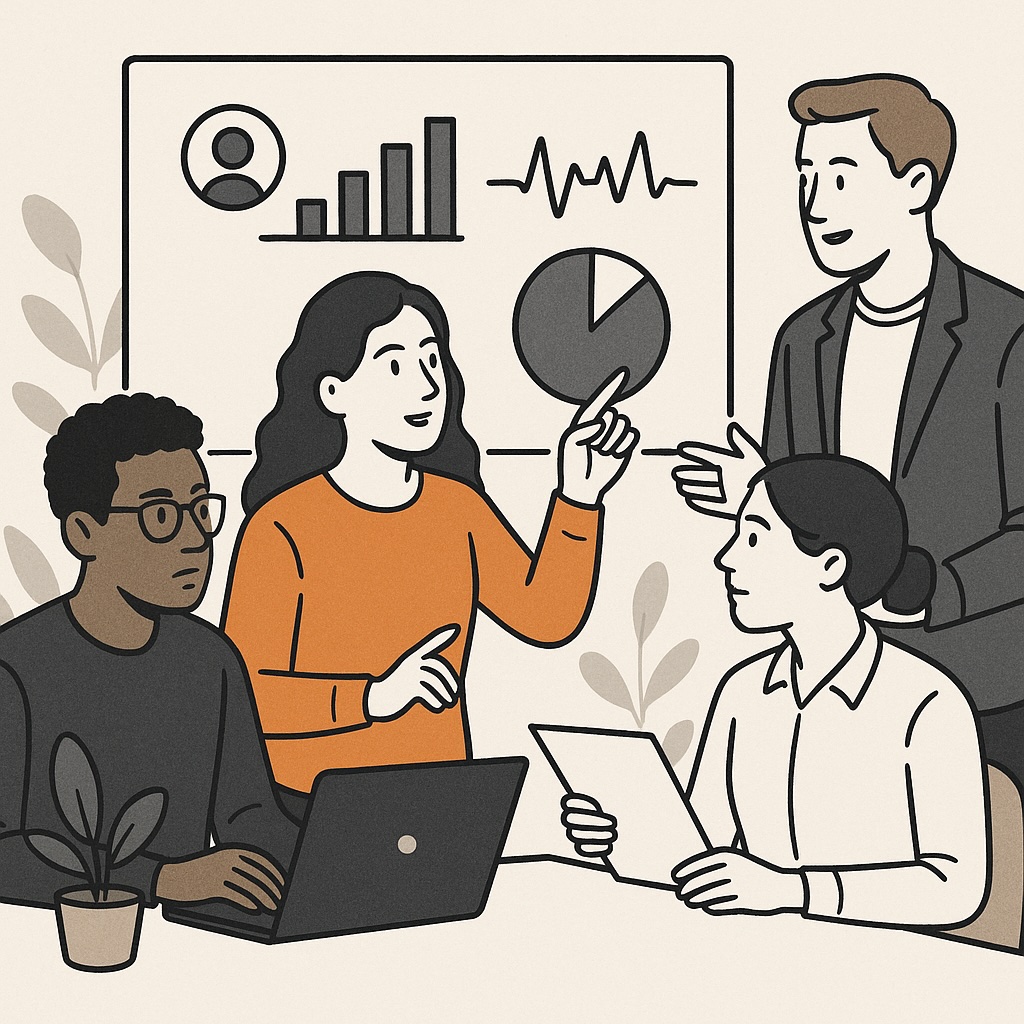
Impact and Social Relevance
Impact and Societal Relevance of Behavioral Data Science
The work of a Behavioral Data Scientist is having an increasingly significant societal impact. By analyzing and predicting behavioral patterns, these professionals provide valuable insights that help organizations make better decisions. Whether it's improving user experience, optimizing public services, or developing ethically responsible algorithms—the influence of behavioral data science is felt across virtually every sector.
Behavioral Data as a Basis for Better Decisions
Behavioral Data Scientists collect and analyze behavioral data from users, customers, or citizens. This allows them to uncover patterns and preferences that are not always visible in traditional datasets. These insights are used, for example, to make apps more user-friendly, personalize customer interactions, or map out societal trends. In doing so, they contribute to better decision-making within both commercial organizations and government institutions.
Supporting Policy Development and Ethics
In the public sector, behavioral data science plays a key role in designing more effective policies. Think of behavioral analyses related to traffic safety, health interventions, or financial support measures. By understanding how people truly respond to stimuli or communication, policymakers can tailor interventions to the behavior of their target audience. Ethics also plays a central role here: Behavioral Data Scientists ensure that algorithms are applied transparently, fairly, and responsibly.
Relevance in Commercial Applications
In the commercial world, behavioral data science drives innovation and competitive advantage. Companies use behavioral insights to optimize the customer journey, predict churn, or deliver personalized offers. Behavior is also crucial in the development of AI systems: machine learning models that incorporate human behavior tend to be more accurate and user-friendly. Behavioral Data Scientists bridge the gap between data and psychology, creating solutions that truly align with the end user.
A Field with Lasting Impact
The societal relevance of Behavioral Data Scientists will only continue to grow in the coming years. In a world where technology and human behavior are increasingly intertwined, their role is essential in translating data insights into human-centered applications. Whether it's inclusive digital services, more effective campaigns, or ethical data use—the impact of behavioral data science is profound and enduring.

How to Become a Behavioral Data Scientist?
How to Become a Behavioral Data Scientist?
The role of a Behavioral Data Scientist is a unique blend of data analysis and behavioral science. To succeed in this field, you need strong analytical thinking and a deep interest in human behavior. This position requires a rare combination of technical skills and empathetic insight.
Step 1: Choose the Right Educational Background
Most Behavioral Data Scientists begin with a bachelor's degree in a field such as psychology, econometrics, (cognitive) neuroscience, social sciences, or economics. A broad interest in human behavior is key. Ideally, combine this with courses in statistics, programming (such as Python or R), and research methodology.
Step 2: Deepen Your Skills in Data Analysis and Machine Learning
After your bachelor’s, a specialization in data analysis is essential. Consider a master's in Data Science, Behavioral Data Science, or a related field. Specialized bootcamps, online courses (such as AI modeling, data visualization, SQL, and A/B testing), and certifications also help you develop practical skills that are directly applicable in the workplace.
Step 3: Gain Practical Experience
Work experience is crucial. Start with an internship or junior position in a data or research role within sectors such as marketing, e-commerce, government, or consulting. Here, you'll learn how to identify behavioral patterns in data and translate them into actionable recommendations. You'll also gain experience with tools like Tableau, Python, SPSS, or Jupyter Notebooks.
Step 4: Build a Strong Portfolio
A strong portfolio sets you apart from other candidates. Showcase your own projects that combine behavioral science insights with data analysis. Think of analyses of customer behavior, user interactions, or online behavior. A solid GitHub page or personal blog with case studies increases your visibility in the job market.
Step 5: Network and Keep Learning
Behavioral Data Science is a rapidly evolving field. Attend meetups, conferences, or webinars on AI, behavioral psychology, and data ethics. By networking with professionals in the field and staying informed about the latest developments, you can strategically shape your career.
Soft Skills Make the Difference
In addition to technical knowledge, communication skills, critical thinking, and a strong sense of ethics are highly valuable. You must be able to translate complex data insights into understandable recommendations for colleagues, clients, or stakeholders. Being mindful of bias and privacy is also essential when interpreting behavioral data.
Conclusion
Becoming a Behavioral Data Scientist means investing in both hard and soft skills. With a background in human behavior, a solid analytical foundation, and the right work experience, you can build a career in one of today’s most promising fields.
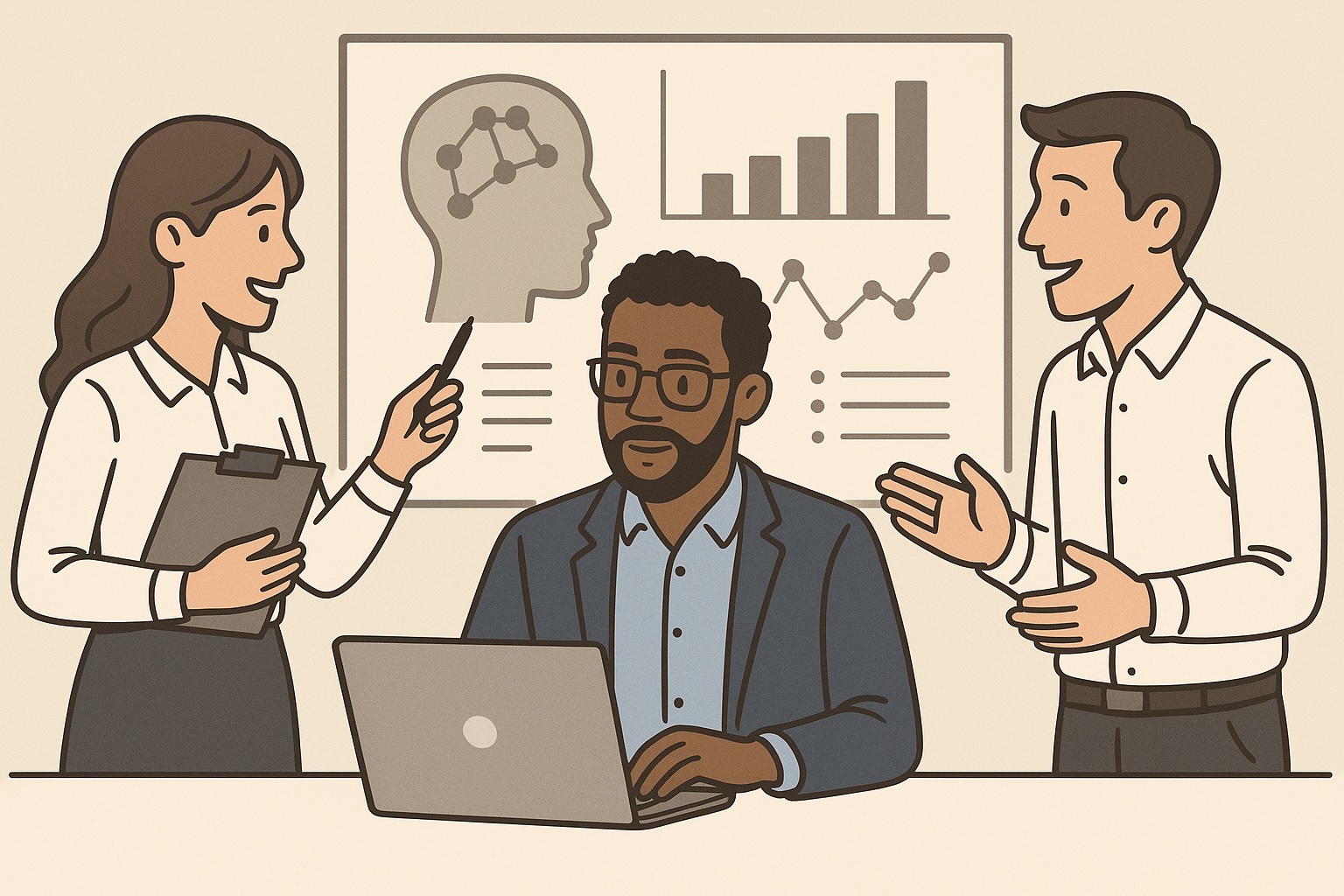
Case Study: The Role of Behavioral Data Scientist
Background
ShopMax, a rapidly growing e-commerce giant with millions of monthly visitors, noticed a growing gap between the massive amount of available customer data and the ability to turn that data into valuable insights. Despite strong sales figures and an extensive product offering, the conversion rate lagged behind, and many customers abandoned their purchasing process early. Marketing campaigns increasingly seemed to miss their mark.
The management team realized that more was needed than standard data analysis: they needed to understand the why behind customer behavior. What drives customers to click, to buy, or to leave? What patterns lie behind loyalty, drop-offs, and spontaneous purchases?
The Challenge
The core challenge was to structurally leverage behavioral data: millions of interactions, clicks, abandoned shopping carts, feedback, and browsing behavior were stored in various silos. But the company lacked an integrated approach and the right expertise to transform this raw data into actionable psychological insights.
Moreover, the data department spoke a different ‘language’ than marketers and product developers. There was a need for someone who understood both behavioral science and data analysis — and could bridge those worlds.
Action by the Behavioral Data Scientist
Lena, an experienced Behavioral Data Scientist, was brought in with a clear mission: bring structure to the behavioral data, uncover what truly drives customers, and translate these insights into concrete actions. Her approach consisted of four phases:
- Data integration: Lena brought together data from CRM, website analytics, customer reviews, and social media into one central environment.
- Behavioral analysis: Using machine learning and segmentation models, she identified customer types such as ‘doubters,’ ‘fast decision-makers,’ and ‘returning hesitators.’
- Hypothesis testing: She set up A/B tests to evaluate behavioral interventions, such as tailored product recommendations or new notifications for abandoned carts.
- Collaboration: Lena worked closely with marketing, UX, and customer service to translate insights into practical applications.
Result
The impact of Lena’s work became visible within just three months:
- The conversion rate increased by 22% thanks to personalized recommendations based on behavioral profiles.
- The number of abandoned carts dropped by 18% due to smart nudges and better-timed reminders.
- Customer loyalty significantly improved: repeat purchases rose, and customer satisfaction scores increased from 7.3 to 8.4.
Thanks to Lena’s unique combination of data science and behavioral psychology, ShopMax successfully bridged the gap between data and human behavior. Her role demonstrated how valuable a Behavioral Data Scientist can be for any organization that wants to be both customer-focused and data-driven.
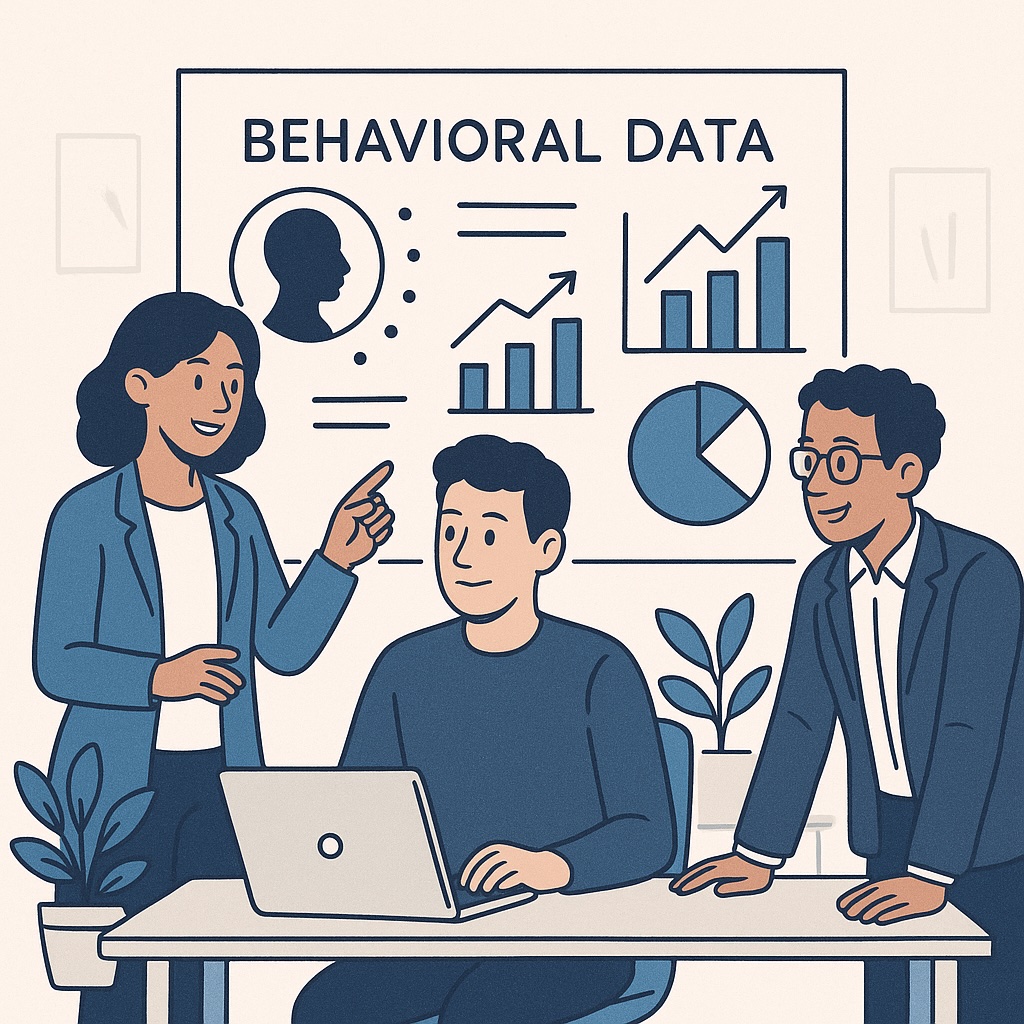
Vacancies for Behavioral Data Scientists
View here all current job vacancies on DataJobs.nl
Looking for a Behavioral Data Scientist?
For a small fee, you can easily post your job openings on our platform and reach our large, relevant network of data and analytics specialists. Applicants respond directly to you, without any intermediaries.
At DataJobs.nl, we connect supply and demand in the data and analytics job market directly—without middlemen. You won’t find vacancies from recruitment agencies here. Visitors can view all job listings for free, without an account, and apply directly.
View the options for posting vacancies here. Questions? Contact us!
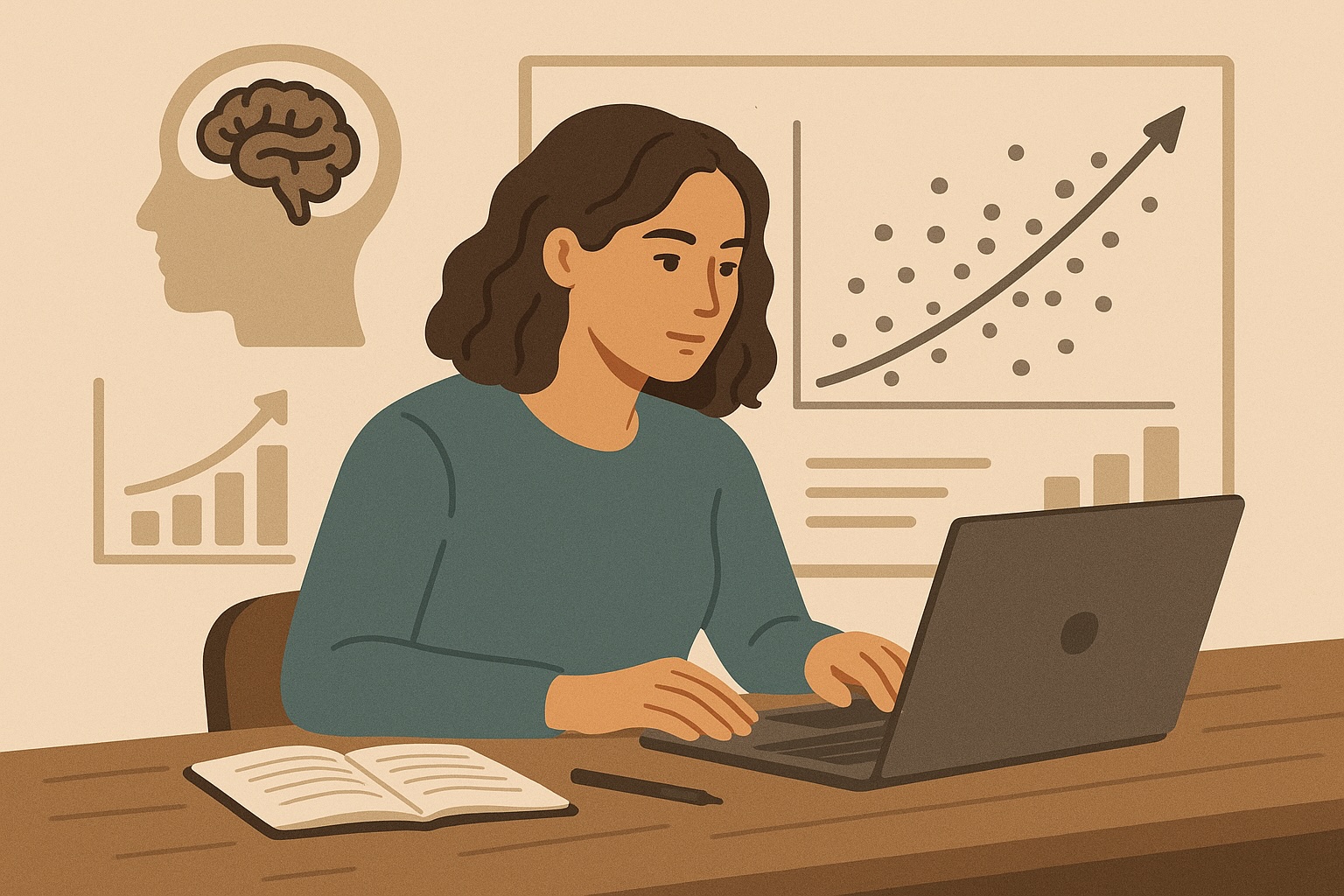
Op zoek naar een uitdaging in data & analytics?
Bekijk hier alle actuele kansen! See vacancies- What Does a Behavioral Data Scientist Do?
- A Day in the Life of a Behavioral Data Scientist
- What tools does a Behavioral Data Scientist use?
- What is the salary of a Behavioral Data Scientist?
- Career path and growth opportunities
- Education and Certification
- Networking and Industry Organizations
- Impact and Social Relevance
- How to Become a Behavioral Data Scientist?
- Case Study: The Role of Behavioral Data Scientist
- Vacancies for Behavioral Data Scientists
- Looking for a Behavioral Data Scientist?


